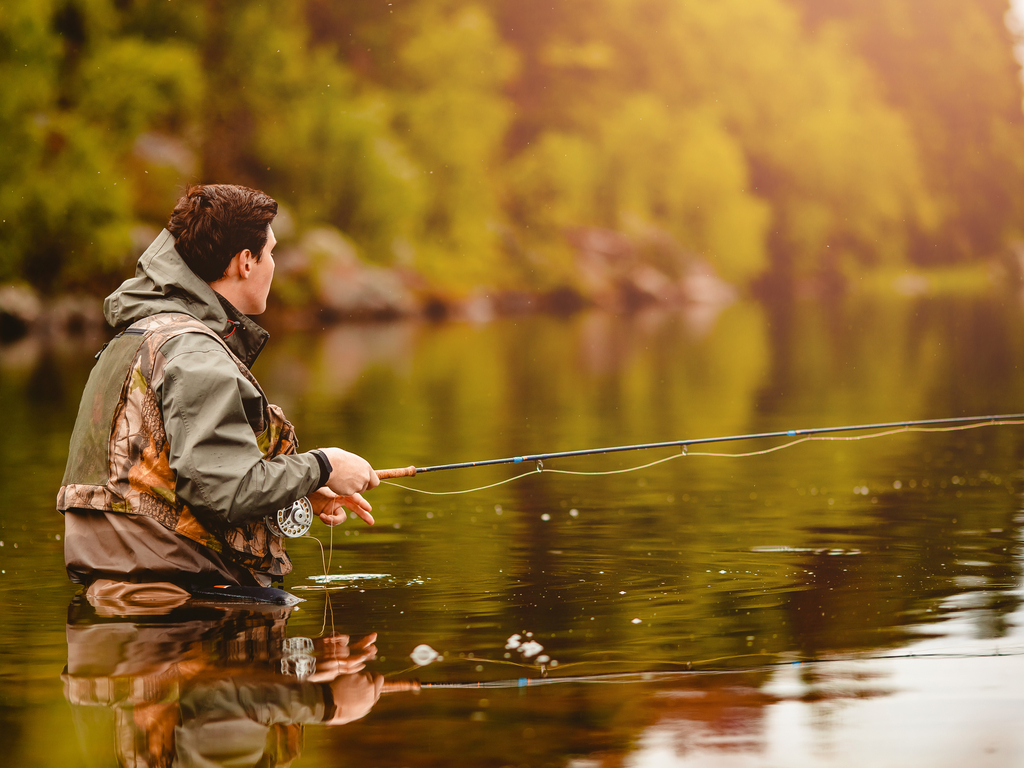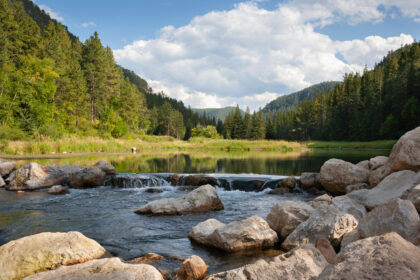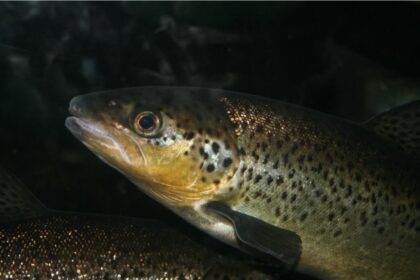Oh yes…we’ve all seen the picturesque scenes a million times – a fisherman at sunset standing in calm knee-deep river water, effortlessly ripping a long flimsy rod back, then whipping it forward several times with poetic motion. The long trailing line shoots forward one last time with a fly attached and lands softly onto the moving water, waiting for a large unsuspecting trout to erupt from the water and snag the presentation.
While that might seem a long way away from your skill level today, remember you must start somewhere and fishing trout in a river does provide some of the best action. Today we will give you some of the basics to get started trout fishing in rivers.
You will learn where the best place is to find trout in a river, what time of day and what time of year is optimal, the best method for trout fishing, and what bait works best for trout.
Where Is the Best Place to Find Trout in a River?
Trout are cold-water fish and hang out in cool deep water during the day.
PRO TIP: The best place to find trout is in deep pools of slow-moving water that can be found right after shallow, fast-moving water. The reason why they wait by the fast-moving water is to take advantage of any food such as crustaceans, minnows, or insects that might float by.
Another benefit of staying near fast-moving water is to keep oxygenated. Fast-moving currents aerate the water allowing the trout to linger in the deep pools without having to move around a lot to pass oxygen over their gills.
Trout prefer colder waters, so they are more likely to linger on the riverbed especially during the heat of the day. Surface waters and areas that are not affected by the current are not likely to have much trout in them. They will not be found in a large stagnant pool, so avoid those.
When Is the Best Time to Fish for Trout?
The best time of day to fish for trout is around dawn and dusk. These are the times when trout are most actively feeding, and the shallower waters are cooler than in the heat of the day. Most of the time their prey is very active during these periods which is also why it’s optimal for them to feed, and for you to fish.
Cloudy days and the first warm spring days are also great times to fish for trout. On cloudy days, the sun does not heat up the water as much so the trout can linger closer to the surface than they normally would on a hot sunny day. The hot sun and warm water can make the fish lethargic and less likely to aggressively snatch up a quick meal.
The first warm days of spring also provide ideal temperatures for the fish because their prey is very active, but the waters have not quite heated up yet. Prey for the trout is often more abundant during this period because of newly hatched insects due to the rise in environmental temperatures.
Late summer may also be ideal because of the abundance of bugs that provide food for the trout but also discourage other anglers from fishing, so you will have less competition for the trout.
Where Are Some Other Places to Find Trout in a River?
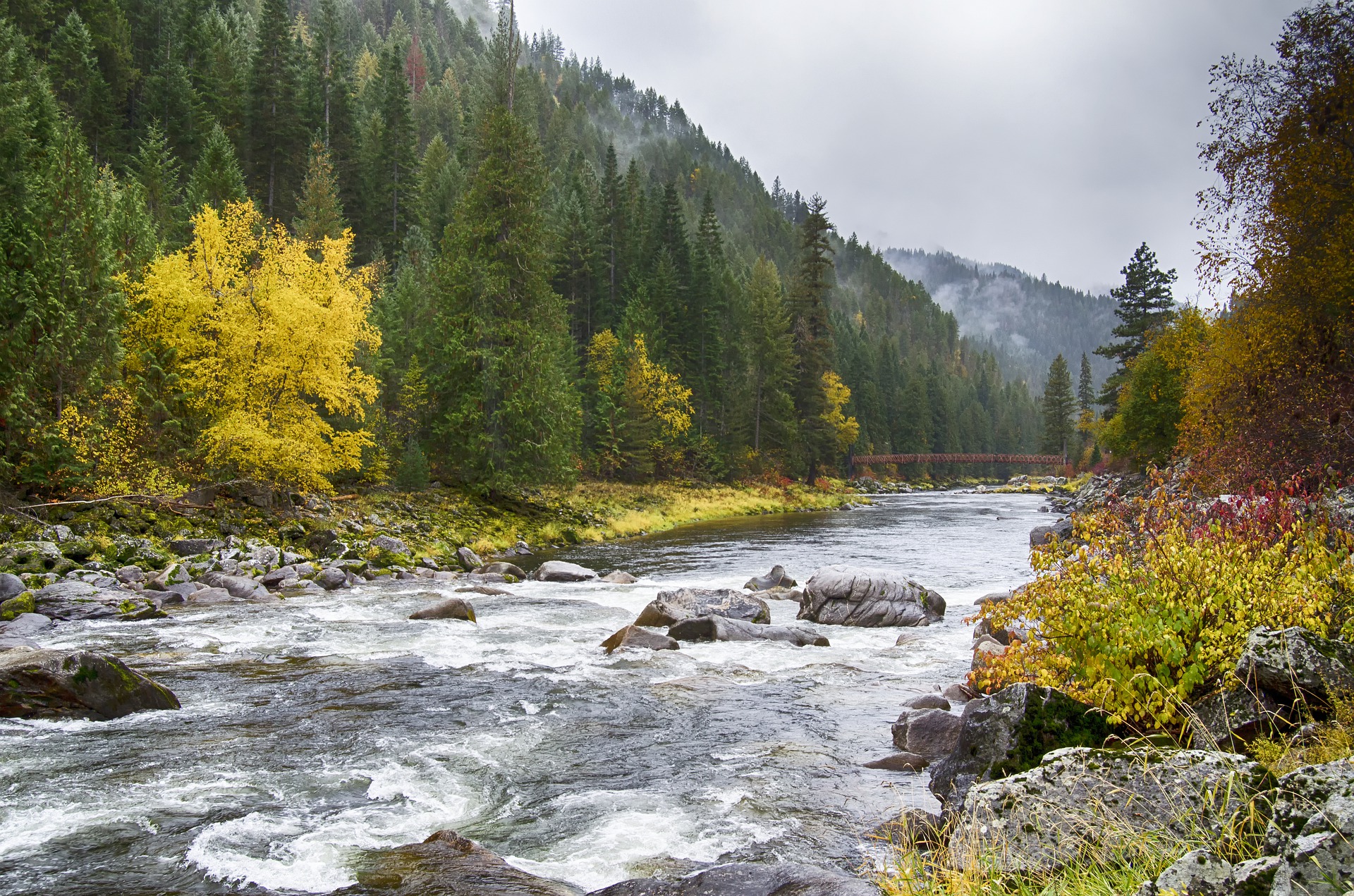
It’s also well known that you can find trout in the river riffles, which is the shallow fast-moving water adjacent to the slow deep pools trout usually frequent. If trout are in a riffle, they are there to feed so the best time to fish for trout in a riffle would be at peak feeding time in the morning or in the evening.
Trout may favor areas just below an undercut bank. This feature provides the trout protection from any aerial (birds) or shore-dwelling predators. Additionally, it works in your favor because the trout cannot see you because of the bank. Areas with downed trees or logs extending over the river offer similar benefits and can also be good gathering places for trout.
Live trees which grow on the riverbank also offer great shelter for trout. Oftentimes their roots encourage the build-up of undercut banks and the trees themselves to offer shade and protection from predators. Streamside trees that are located near the main current are favorable for the trout to be able to stay safe yet still keep an eye out for food.
Look for small backwash pockets in the river where the current backs up to allow food to accumulate and attract the trout. These can usually be found behind chutes and large rocks, at the bottom of rapids, or adjacent to fast flows. Bends in a stream or river can also provide similar backwash pockets for food accumulation.
What Is the Best Method to Fish for Trout?
Spin fishing is one of the easiest and usually the most effective method to fish for trout. All you need is a rod, spinning reel (hence spin fishing), line, a lure, and a swivel to prevent the line from getting twisted up from spinning.
Artificial lures tend to work best due to the bright flashy colors which serve to attract the trout. Some of the best lures to use include green or yellow rooster tails, curly tail grub, gold and silver panther martin. A trout magnet jig that jigs off the bottom of the river is also useful.
Once you found a good spot where trout might be hanging out, cast your lure upstream and let it float downriver. This way the lure will mimic the trout’s real prey by floating passively into the deep slow pools the trout are most likely inhabiting. Once it floats by you, slowly reel back up the side of the river until you catch the attention of the trout that bites.
You may have to move up and down the river in search of the deep slow pools where the trout hang out. Always cast upstream so the current works in your favor. Patience is your best tool when fishing for trout but don’t spend too long hoping your luck with change. Work an area for 15 or 20 minutes, then change your lure, change your distance cast, change your reel in speed, change your location, and if all else fails, change to the bait.
Can You Use Bait to Fish for Trout?
Bait also works for angling trout in a river. While spin fishing is more active and can be used in faster running currents, bait can be used for slower moving rivers and streams or deep pools where your bait can sit without getting washed downstream.
For starters, set your hook up with power bait (or any bait of choice) on a six-to-ten-size hook weighted with a small split shot weight, positioned up above the leader. Use the same kind of cast as previously described – cast upstream of the trout pool and let your line and hook float downstream to the fish.
Let your hook sink to the bottom of the trout pool or just sit in the hole while the bait does the work of attracting the trout. If you have a longer leader that you need to keep off the bottom of the river, you can add a bobber to your line but that will keep it from getting deep into those pools.
Bait is very versatile and can work well for trout fishing under a few conditions. Live bait can provide the attraction needed through movement by disturbing the water. Alternatively, live motion can be mimicked by jigging the lineup and down to attract the attention of a trout. Flashy and reflective bait are especially good for bounce jigging.
This method may grow tiresome for both you and the fish after a few casts in the same trout pool. To keep things from getting stale, move around to different fishing holes. This will not only allow you to keep things moving along but will also prevent the fish from growing wise as to your hook’s intention.
What Are the Best Baits for Trout?
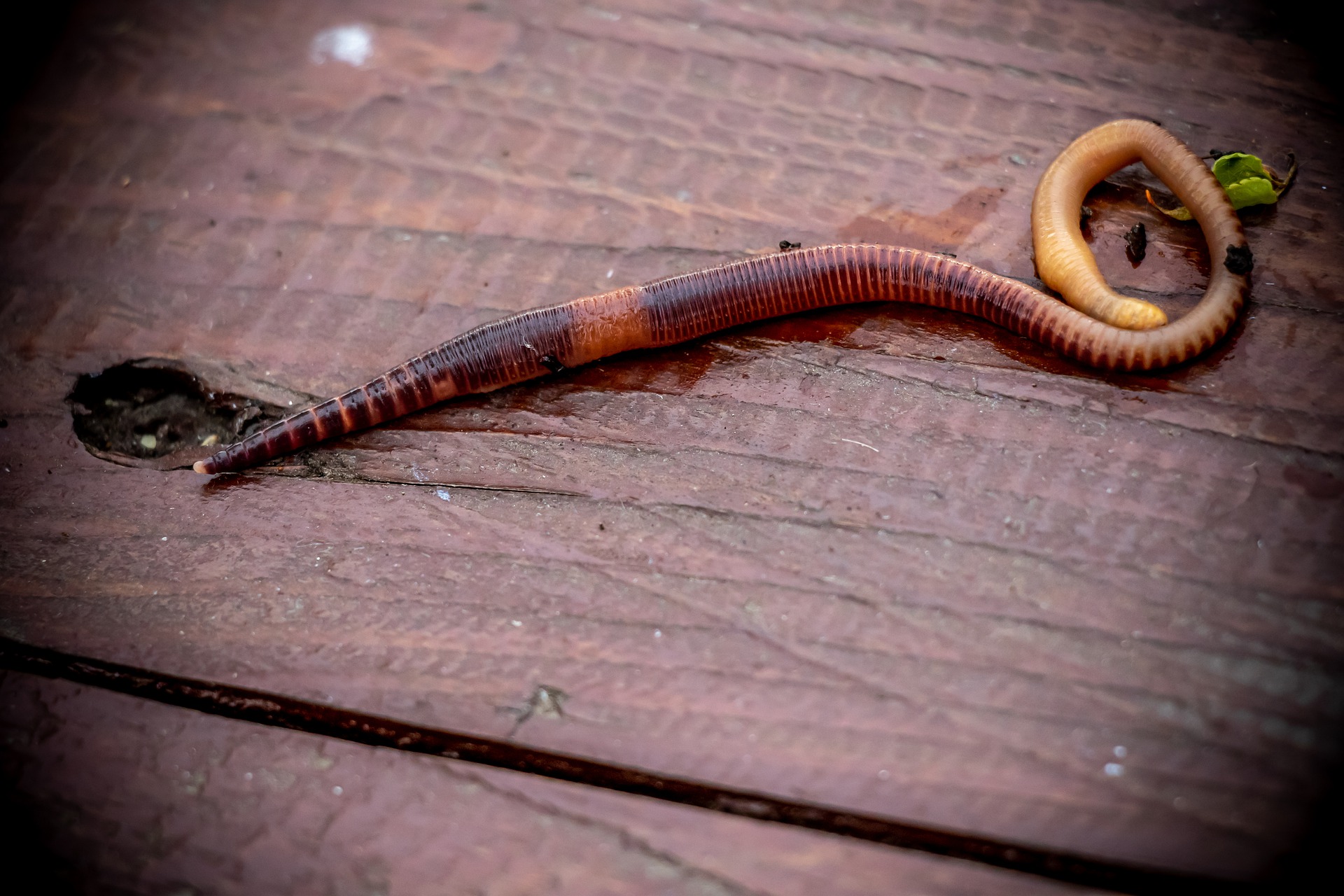
If you are looking to fish for trout using bait, there are a variety of options including worms, maggots, crickets, leeches, aquatic insects, and fish eggs.
Live Bait
Worms are one of the best trout baits because they are part of a trout’s natural diet. When it rains and the soil is saturated, earthworms emerge from the soil and often fall into rivers where the trout consume them as a great protein source.
Fish eggs are another recognized source of proteins and nutrients for trout. The egg of char, suckers, salmon, and trout tied up in a mesh bag and dangled from the end of your hook provide an irresistible meal for trout. You can purchase fish eggs already bagged or loose so that you can bag your own.
Smaller worms such as mealworms, maggots, wax worms, and grubs also work well for attracting trout. Although these worms are smaller than the larger earthworms which are more commonly used, they are quite effective at catching both small and large trout.
Crayfish and leeches are common prey items for trout and present as wonderful bait if you can get your hands on them. They are less favored forms of bait however because most anglers do not want to take the chance of getting pinched by crayfish claws or are squeamish about blood-sucking leeches.
Insects such as crickets, beetles, grasshoppers, and aquatic bugs are also common bait types as they are found in abundance around rivers. Trout are no strangers to eating these critters because of their tendency to fall into the water on occasion.
Baitfish and minnows work well although they are larger than the preferred worm and insect bait and can be difficult for smaller trout to handle. However, due to the shiny, attractive nature of these fish, trout may readily go after this bait, recognizing a nutritious source of food.
Artificial Bait
Artificial varieties of all of these types of real bait are also available and useful for trout fishing. Plastic worms can come in a plethora of flashy colors and imitate the motion of real worms quite well if jigged properly. Plastic fish eggs or even beads are great imitators of real fish roe and often trout cannot tell the difference.
Imitation minnows can also be very lifelike if set to float downstream properly or bounce jigged to mimic true movement. All of these baits are great to use when fishing for trout so you have a wide variety of options from which to choose.
Conclusion
Trout fishing is an enjoyable activity for many and can be very easy to learn once you know where to find the trout and how to catch them. Trout are mostly found in deep slow-moving water pools adjacent to fast-moving waters which carry their food. The best time to fish for trout is when they are actively feeding around dawn and dusk.
A simple rod and spinning reel with an artificial lure or bait is the best gear to use for angling trout. Bright flashy lures which are intended to attract the trout or live bait such as worms, insects, or baitfish all work well to entice the trout to bite.
The best method for catching trout is to mimic their natural prey by casting upstream of a trout pool and letting your line float downstream into the deep slow pool. If you are having trouble getting a bite, move to a different location for better luck.
References
https://www.gameandfishmag.com/editorial/10-top-spots-to-look-for-while-trout-fishing/192506

